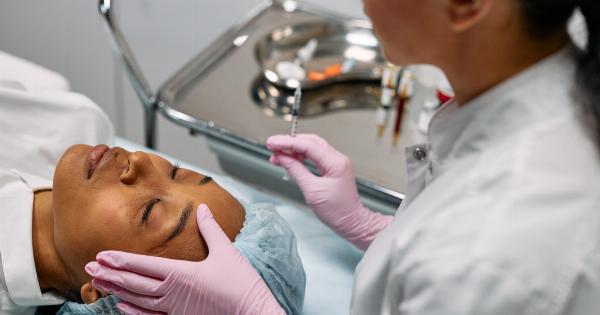Filler treatments have become increasingly popular in recent years as a quick and easy way to enhance one’s appearance. They are commonly used to smooth out wrinkles, plump up lips, and restore volume to the face.
However, while fillers can produce temporary cosmetic improvements, they also pose serious health risks that should not be taken lightly. In this article, we will explore the potential dangers associated with filler treatments and the serious health issues that can arise as a result.
1. Allergic Reactions
One of the most common serious health issues that can result from filler treatments is an allergic reaction. Fillers are typically made from materials such as hyaluronic acid or collagen, which are relatively safe for most individuals.
However, some people may develop an allergic reaction to these substances, leading to symptoms such as severe swelling, redness, pain, and itching. In rare cases, these reactions can be life-threatening and require immediate medical attention.
2. Infection
Another significant risk of filler treatments is the potential for infection. While injectable fillers are minimally invasive procedures, there is still a risk of bacteria entering the injection site.
If proper sterilization techniques are not followed or if the area is not cleaned properly prior to the treatment, it can lead to an infection. Symptoms of infection may include redness, warmth, tenderness, swelling, and pus formation at the injection site. If left untreated, infections can spread and cause more serious health complications.
3. Nerve Damage
The use of fillers carries a risk of nerve damage, especially when administered by an inexperienced or unqualified practitioner. Accidental injection into a nerve can result in nerve compression, paralysis, or loss of sensation in the treated area.
This can lead to long-term or permanent damage and requires specialized medical attention to mitigate the effects.
4. Vascular Complications
Vascular complications are another potential serious health issue associated with filler treatments. In rare cases, an injection can inadvertently be made into a blood vessel, resulting in blockages or damage to the blood supply.
This can lead to skin necrosis (tissue death), scarring, and even blindness in severe cases. It is crucial for practitioners to possess extensive anatomical knowledge and adhere to precise injection techniques to avoid such complications.
5. Migration of Fillers
Fillers are designed to remain in the area they are injected into. However, there is a risk of migration over time, particularly with permanent fillers. A shifted filler can cause asymmetry, lumps, and irregularities in the treated area.
Additionally, migration may inadvertently block important structures or disrupt the normal function of tissues, leading to further complications.
6. Granuloma Formation
Granulomas are small, localized nodules that can form as a result of an immune response to foreign substances such as fillers. These nodules can be firm or tender and may cause discomfort or cosmetic concerns.
Treatment for granuloma formation typically involves the removal of the filler and, in some cases, additional medical intervention.
7. Overfilling and Underfilling
Poor injection techniques, lack of experience, or miscommunications with the practitioner can lead to overfilling or underfilling of the treated area.
Overfilling can result in an artificial or disproportional appearance, while underfilling may yield unsatisfactory results. Both situations can cause significant distress and may require corrective procedures to rectify.
8. Psychological Impact
While not a direct physical health issue, it is essential to acknowledge the potential psychological impact that can arise from filler treatments gone wrong.
Individuals may experience emotional distress, lowered self-esteem, and body dysmorphia due to dissatisfactory outcomes, complications, or botched procedures. It is crucial for practitioners to prioritize their clients’ mental well-being and provide appropriate support throughout the process.
9. Allergic Reactions to Anesthetics
During filler treatments, local anesthetics may be used to minimize discomfort. However, some individuals may develop allergic reactions to the anesthetics themselves.
Allergic responses can range from mild skin irritations to severe symptoms like difficulty breathing or anaphylactic shock. It is crucial for patients to disclose any known allergies to their practitioner beforehand to minimize the risks.
10. Long-Lasting Side Effects
Even in cases where filler treatments go smoothly, there is always the possibility of long-lasting side effects. Some individuals may experience persistent swelling, bruising, or discoloration in the treated area.
These effects can last for weeks or even months, potentially impacting daily life and self-confidence.
While filler treatments can offer temporary cosmetic enhancements, it is essential to carefully consider the potential serious health issues associated with these procedures.
Choosing a qualified and experienced practitioner, thoroughly discussing risks and expectations, and prioritizing safety throughout the entire process can help mitigate these risks and ensure a positive outcome.































